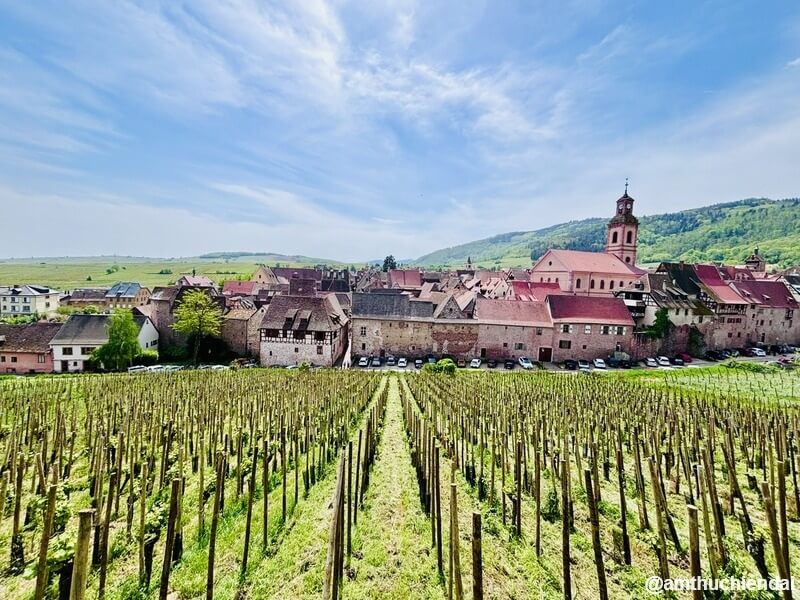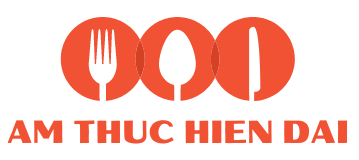Every journey has a beginning, and the most important thing is to take that first step and keep learning—everything else will follow.
This is true with wine, but its vast history and depth of knowledge can feel overwhelming.
That’s why a few tips from an expert can be invaluable, saving you both time and money as you get started. With this in mind, I met with Trần Trọng Hải Hà, a Vietnamese award-winning sommelier trained in France, to discuss the dos and don’ts for wine beginners. More importantly, it was a chance to demystify the whole wine experience.
This was followed by a second conversation on ‘How to Pair Vietnamese Food with Wine.’ See the article below if you’re interested :
Pairing Vietnamese Food with Wine: A Sommelier Explains
1. Don’t Be Intimidated
At his wine bar, Bouchon, Hải Hà regularly hosts workshops with his wife, aimed at local wine enthusiasts.
Since wine is not traditionally Vietnamese and is still often seen as a Western delicacy, Hải Hà frequently encounters participants who fear making mistakes or “doing it wrong.”

He addresses these fears directly:
“People need to first understand that wine is only a drink—not every wine is complex or hard to appreciate. This is especially true when you start with affordable wines.”
This resonated with me as a French person. Like many teenagers, I began drinking very cheap wine without overthinking it, focusing only on whether it was inexpensive and tasted decent.
Wine is an Everyday Drink
In fact, this is pretty common in many European countries with centuries-old wine traditions. Wine is considered an everyday drink, and people enjoy it in all kinds of ways—some of them truly awful.
Take kalimotxo, for example, a drink popular among youngsters in Spain that’s a 50/50 mix of Coke and red wine.
So, don’t be afraid to “drink your wine incorrectly” in front of a French or a Spanish person—they’ve probably done 10 times worse in their past!
2. Ask Questions—Don’t Fear Being Stupid
Not being intimidated also means, “Don’t be afraid to ask questions, even if you’re worried about sounding stupid.”
Hải Hà emphasized this several times during our conversation, adding, “You shouldn’t overestimate the knowledge of those around you, even if they seem accustomed to drinking wine regularly.”
We both agreed on this point, sharing our experiences of meeting many French people who have been drinking wine their entire lives but don’t know some of the basics—like the different grape varieties behind famous French wines.

3. You Don’t Need to Spend a Crazy Amount of Money to Get Started
Budget is often a concern for people starting their wine journey, especially in Vietnam, where heavy taxation is applied.
But for Hải Hà, this isn’t an insurmountable obstacle:
“You can find very decent bottles in Vietnam for 150K–200K VND, with enough variety in this price range to start your wine education,” he explained.
He even advises against jumping into buying “exceptional bottles” too quickly—not just because some people do it solely to show off their wealth, but also because it can be difficult to truly appreciate what makes these wines special without enough experience.

Drinking Romanée Conti
On this point, Hải Hà shared his personal experience of drinking one of the world’s most prestigious and expensive wines—Romanée Conti, a Burgundy Pinot Noir—early in his wine journey.
When he took his first sip, his reaction was, “I do not understand ANYTHING.” The wine impressed him, and it was clear that it was special, but he lacked the reference points and experience to understand what truly made it exceptional.
“I was still early in my wine training, and Pinot Noirs from Burgundy were new to me. I was missing some important points in my education,” he explained.
4. You Want to Learn: You Need to Study
While it’s important to demystify wine, Hải Hà doesn’t want people to think that “wine is simple.”
“There are over 10,000 grape varieties in the world that can be used to make wine. With many types of alcohol, the name on the bottle tells you exactly what to expect, but with wine, that’s not the case,” he explained.
“The same appellation can produce very different wines depending on the vintage—and even for a wine made in the same year, the moment you choose to open the bottle will affect the final wine you drink.”
Drinking Wine Is Not Enough

This led Hải Hà to emphasize, “Drinking wine regularly will only take you so far. There’s no shortcut—at some point, you really need to learn and pay attention to everything that makes up a wine.”
“Many people who have been drinking wine all their lives don’t realize they reached a plateau in their wine journey years ago.”
The great thing is, that learning about wine opens up many roads, all of them fascinating. Wine encompasses history, regional traditions, gastronomy, and so much more.
5. Cépage First
That being said, the amount of knowledge a beginner might need to absorb about wine can seem overwhelming.

This is true, but for Hải Hà, you can overcome that by simply starting in the right place.
For him, without question, it’s understanding the different grapes used to make wine. As he puts it, “Knowing the grape a wine is made from is like understanding the first brick used to build it. It will be the foundation of the flavor, aroma, and texture you’ll find in it.”
This is particularly important, as too many people are often fixated on the appellation or the “domaine” that produced the wine.
6. Be Curious and Learn – Ask the 5 Ws
If you want to go further than just understanding the grape, a great way to deepen your wine knowledge is to act like a journalist and ask yourself the 5 Ws.
For Hải Hà, applying this method to wine would lead you to ask the following questions:
WHAT : What are the ingredients used to make this wine? Here, we’re obviously talking about the grape variety or varieties, as some wines are a blend of several different grapes.
WHERE : In which part of the world is the vineyard located? At what altitude, under what climate, and—very importantly—on what type of soil? All of these factors contribute to the terroir, which, along with the grape, forms the foundation of a wine’s identity.
WHO : Who are the people behind this wine? Is it produced by a young and passionate winemaker taking over the family vineyard, the owner of a famous château with a long history, or a large company owning vineyards across several regions? The story of those involved helps shape the wine’s identity.
WHEN : When was this wine produced? What were the weather conditions that year, and how did they impact the wine? How was the wine aged, and what effect did that have? These factors make almost every bottle unique.
HOW : What techniques were used to make the wine? Winemaking is truly an art, and producers can employ various methods and tools to achieve the desired outcome. For example, when it comes to sparkling wine, there are at least five different methods used to create the bubbles that give these wines their character.
7. Train Your Nose
Learning about wines is great, but how do you train your nose to fully appreciate and decipher them?
I wanted to ask this question specifically to Hải Hà, who has a reputation in Hanoi for excelling at blind wine tasting.

Listening to him, he explained:
“I purposely trained my nose. When learning about wine in France, I forced myself to smell everything around me, even unusual things, and tried to memorize and categorize all the odors.”
Hải Hà acknowledged that this doesn’t come naturally, as smell is often a sense we tend to neglect compared to sight or hearing, but there are a few things you can try:
“When eating, take the time to really smell each element of your meal—first separately, then after combining them. Never eat mindlessly!”
“Smell your hand regularly, especially after it touches something like your hair, a dusty blanket—literally anything. You can cup your hand to help concentrate the scent. You’ll be surprised by how many odors your hand can capture this way.”
By making these small gestures part of your routine, you are actively training your nose.
8. Mind the Temperature
Drinking wine comes with many rules that can feel intimidating to beginners—glassware, handling the bottle, decanting, and more.
But according to Hải Hà, while these traditions exist for a reason, they shouldn’t be overemphasized.
“If there’s only one thing to focus on from all these rules and traditions related to the ‘Art of Wine,’ it’s temperature,” he said. “Serving wine at the correct temperature isn’t optional—it’s essential, as it greatly affects the taste.”
Here are the recommended wine temperatures to remember: red wine: 14 to 18°C, white wine: 10 to 13°C, esarkling wine: 7 to 10°C.

Hải Hà also emphasized being cautious with red wine. Europeans often say red wine should be served at room temperature, but the ambient temperature in Europe is much cooler than in Vietnam. Always chill your red wine when serving it in Vietnam.
Read more about wine

